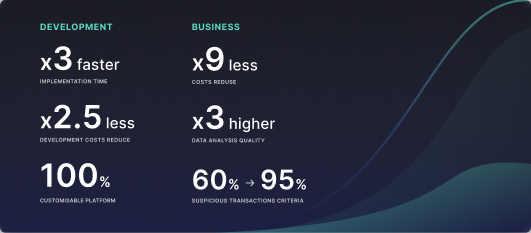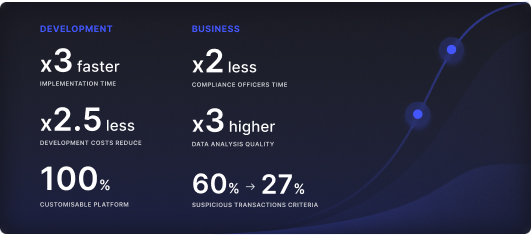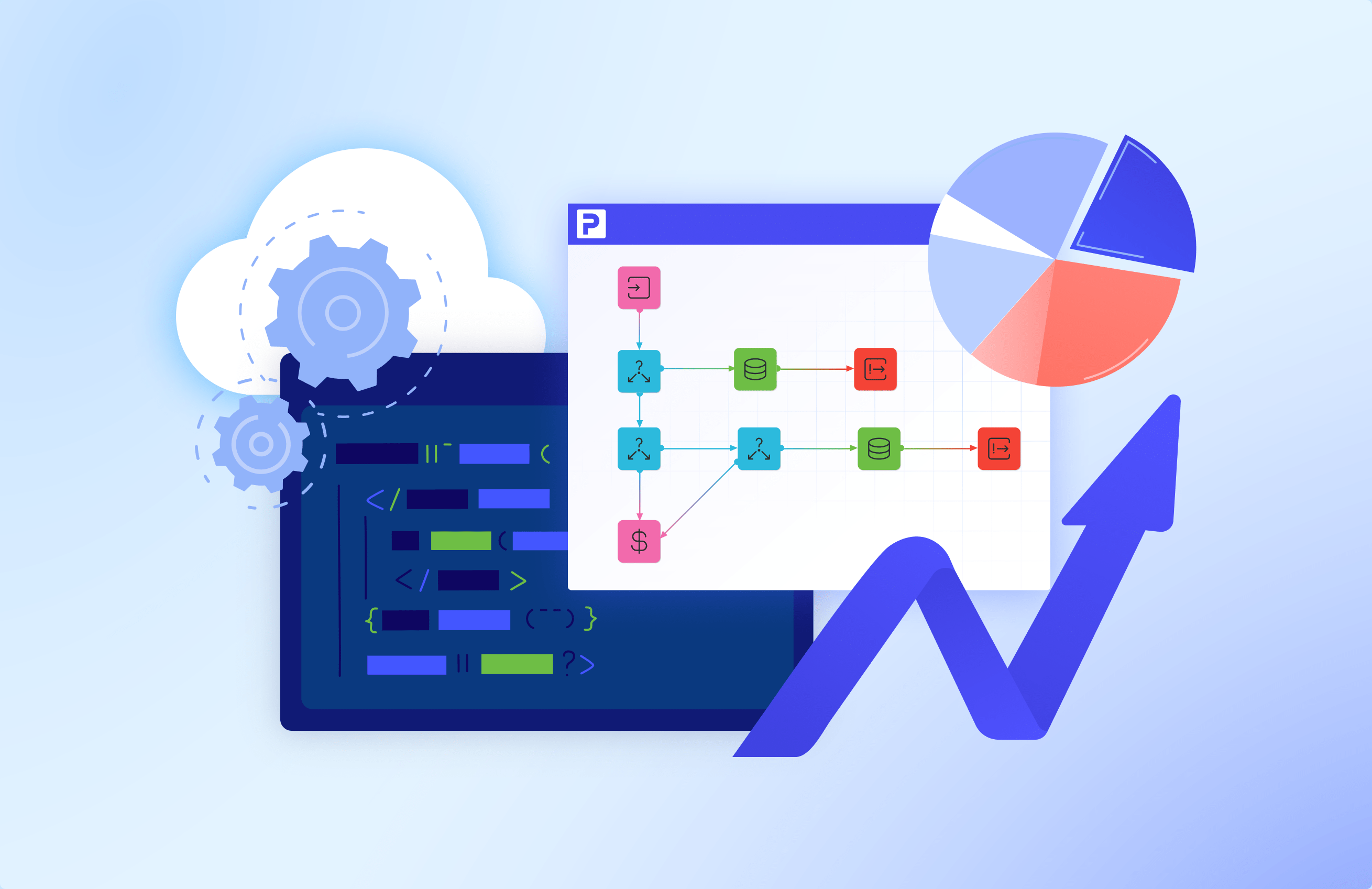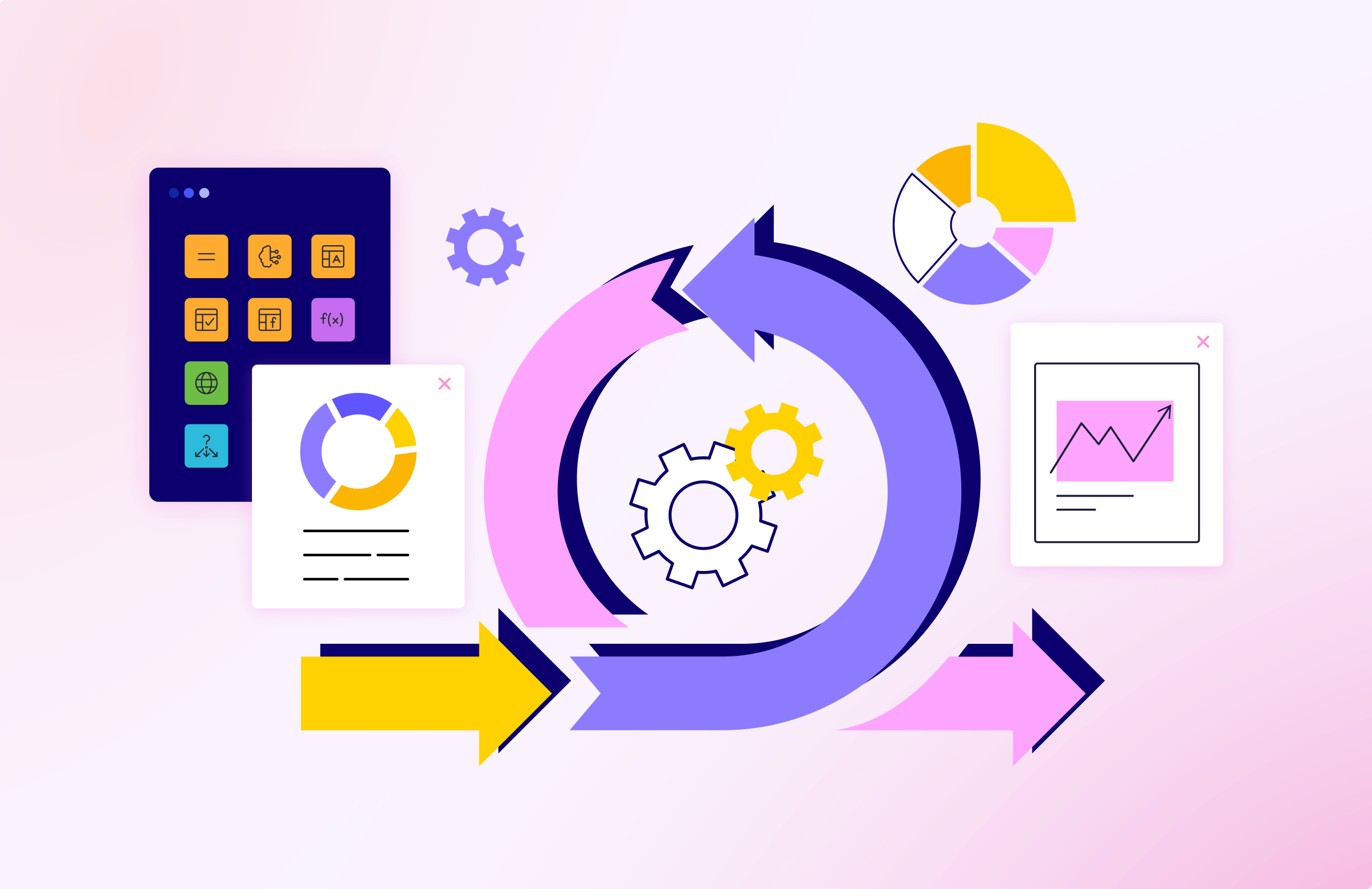Where and how to use scoring rules to make better decisions in process automation


Scoring is used in almost every domain of human activity. With scoring and marks, we measure performance, achievements, and other indicators of success. Sports teams, corporation managers, hospitals, factories, and a whole variety of other enterprises strive to give a numerical expression to their performance metrics.
Now, with the advancement of digital technologies, scoring has gone to a new level. Businesses started to score their performance and evaluate customers using automation software. Scoring automation tools can process hundreds of metrics and work with large amounts of data, allowing business departments to derive more insights faster.
Here, you will learn more about modern scoring automation technologies and how to apply them to your business.
What are business scoring cards?
Scorecards or balanced scorecards summarize multiple relevant metrics that evaluate performance in different business domains.
There are two types of business scorecards: balanced operational scorecards and strategic balanced scorecards. Operational scorecards are the cards that show the operational efficiency of a business. Strategic scorecards calculate scores that allow enterprises to get more strategic data to evaluate customers and performance for successful decision-making.

How do scorecards work?
Scorecard calculations are based on multiple scoring rules that define the final score of a particular performance metric. Scoring rules should reflect the organization’s business strategy as precisely as possible.
In the case of customer evaluation scorecards: scoring more points corresponds to a higher probability of spotting potential customers. Scoring automation tools extract the necessary data from businesses’ databases and calculate a score comparing them against the predefined criteria. Such tools send the scorecard to a CRM system where the employees make additional decisions based on the information.
Modern scoring involves multiple automation technologies like RPA (Robotic Process Automation), AI (Artificial Intelligence), and ML (Machine learning). These technologies are used to automate rules’ execution, the collection of the necessary information from several sources, and the calculations themselves. Scoring automation systems employ scoring rules engines that orchestrate the automated execution of the rules defined by the business team.

Let’s take a customer evaluation card and see which data may be relevant. In this case, demographic data used for business scorecards usually boils down to geographic (customer country of residence, nationality) or demographic (age, sex, material status). For example, customers residing in colder places are more likely to buy warm clothing, so companies can create website rules that will set the website to present winter outfits to the customer group from colder countries like Norway or Iceland.
Benefits of scoring rules
Automated scoring rules allow businesses to have a clearer vision of their customers and performance. Here are some of the most important pros of scoring rules for businesses.
Decision-making precision
Scorecards based on the right set of rules give sales, customer relations, and other teams a more detailed vision of their clients. Having a clear vision of a prospect, these teams can choose the strategy to make a deal. As a result, precise decision-making in lead processing increases customer success rates.
Better customer relations
Understanding customers’ needs helps businesses to target their products and service to those who need them. When a customer service department sees what every customer wants, they can personalize their experience.
Improved business performance
Scoring rules for performance analytics reveal the level of the team’s progress toward a particular business role. This scoring type helps managers evaluate the time when the goal will be reached and the most valuable team members.
Where should scoring rules be used?
Businesses use scoring rules in their own way. Companies mostly use digital scorecards to improve customer retention, sales activities, and team performance monitoring.
Scoring rules are applicable for:
B2B businesses
In a B2B model, the decisions are made by multiple decision-makers. They decide whether to buy, negotiate, or decline an offer. B2B business models have a long sales cycle that involves multiple steps. That’s why scoring rules make an immense impact on this business area.
Let’s take examples of lead and account scoring in B2B businesses:
Lead scoring
The sales team scores lead based on how well they respond at each touchpoint. So, here the B2B business can implement the following set of rules:
- 3 points for opening an email letter
- 5 points for registering for a webinar
- 5 points for Twitter mentions
- 5 for not responding after 5 email follow-ups
- 10 points for attending a training
Account scoring
The industry the customer organization belongs to, their purchase quantity, company location, annual turnover, and quarterly growth are important qualifying criteria in a B2B model.
For example, a textile manufacturer can channel marketing funds in the right direction by identifying the best deals using this scoring model:
- 10 points for working in the clothing industry
- 5 points for working in the shoes and accessories industry
- 10 points for being an international brand
- 8 points for making a bulk purchase of raw materials every month
- 6 points for an annual turnover of more than US$100 million
Marketing campaigns
The marketing teams evaluate the customers based on their involvement, website behavior, and responsiveness. Here are some of the rules marketers can use for scoring their leads:
- 4 points for being interested in a service or product
- 7 points for registering for having a service or a product
- 10 points for clicking on a promotion
- 6 points for not responding to email follow-ups
- 10 points for downloading
Banks and lending organizations
The bank collects data on customers’ credit history, level of income, actions on the website, and other relevant facts. Then, this data goes to a specialized system that processes the data according to a set of pre-defined scoring rules and gives out a final score of a potential client. The final score allows the bank’s sales managers to choose the right strategy to offer suitable credit conditions.
- 5 points for visiting the credit lending page
- 7 points for registering on the bank’s website
- 8 points for responding on a follow-up email
- 10 points for a clean credit history
How to use scoring rules in process automation.
If you have your scoring system in place, you are ready to create scoring rules for the automated scoring flow. To make a scoring rule, you’ll need to set it like this:
- Name the rule
- Choose the module you want to create a rule for
- Create a layout to which the rule will apply
- Select the criteria against which the rule will be compared
- Select the touchpoints and assign scores for every customer’s interaction with your service or product.
This model is a raw example of how you can make a scoring rule. From platform to platform, it can change, depending on a variety of factors.
Low-code Platforms for Scoring Rules Management
Fortunately, businesses don’t have to spend thousands of dollars to implement scoring rules. Low-code platforms enabled with smart scoring technologies (AI/ML, RPA) allow companies to set scoring rules and integrate them with other business software much faster and within a moderate budget. Low-code scorecard creation has several significant benefits:
Lower costs
Low-code scorecard development doesn’t require the input of expert software developers that have high hourly rates and are hard to hire. The architecture for the solution is ready-made, so all you need to do is choose the right set of pre-made code components and insert custom scoring rules, and get started.
Easier scoring rules management
Low-code development is accessible for citizen developers due to the simple user flow. This allows domain experts with no or little development experience to manage scoring rules creation, adjustments, and implementation.
Faster scoring automation development
Low-code platforms facilitate scoring rules creation via a visual development interface and pre-made code components. Your team doesn’t need to build scoring automation tools from scratch. With a low-code platform for scoring rules creation and automation, they only compile the necessary scoring templates and set their rules.
Unlimited customization
Low-code scorecards can be customized wherever you need. Customization may require a professional developer to code manually to get the precise results desired. At the same time, it is much easier for a developer to work with a low-code platform as long as it provides automated testing/debugging tools, instant app deployment capabilities, and visual development tools.
Vast integration capacity
You can integrate low-code scoring rules with multiple databases, online services, and other web and mobile applications. Low-code tools have ready-made connectors, so you can connect services in a few clicks. Then, the low-code app derives data automatically from multiple sources.
Implement Scoring Rules with ProcessMIX Low-code Platform.
ProcessMIX is a low-code platform for back-end development. It is embedded with a performant scoring rules engine that is able to process large amounts of input data and evaluate them against multiple scoring rules.
The platform includes a visual development interface with drag-and-drop functionalities, and pre-made connectors for databases, online services, websites, and other apps.
Try the ProcessMIX low-code platform for scoring and see the benefits of low-code scoring rules engines for yourself. ProcessMIX has a free beginner plan, so you can leverage the platform right now. If you need more detail on the platform’s functionalities, use cases, and how to use it, visit our website. To get a free in-depth consultation on your business case, contact our support team.
 Visual Development
Visual Development Assignment of risk level and customer category within KYC processes at customer onboarding
Assignment of risk level and customer category within KYC processes at customer onboarding Cross-Sell Offer Calculation for the 12M Client Base
Cross-Sell Offer Calculation for the 12M Client Base


